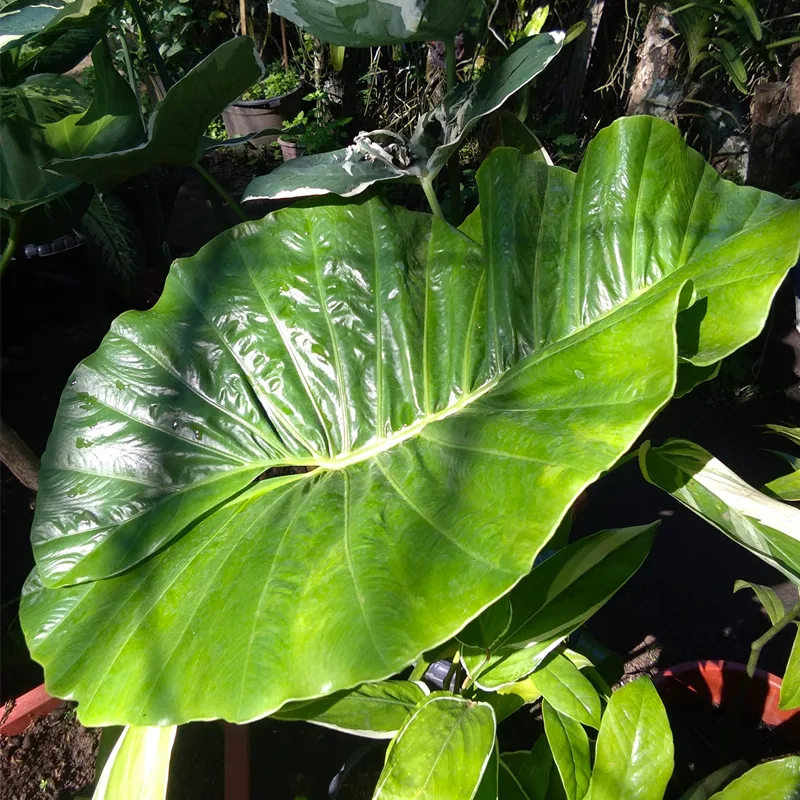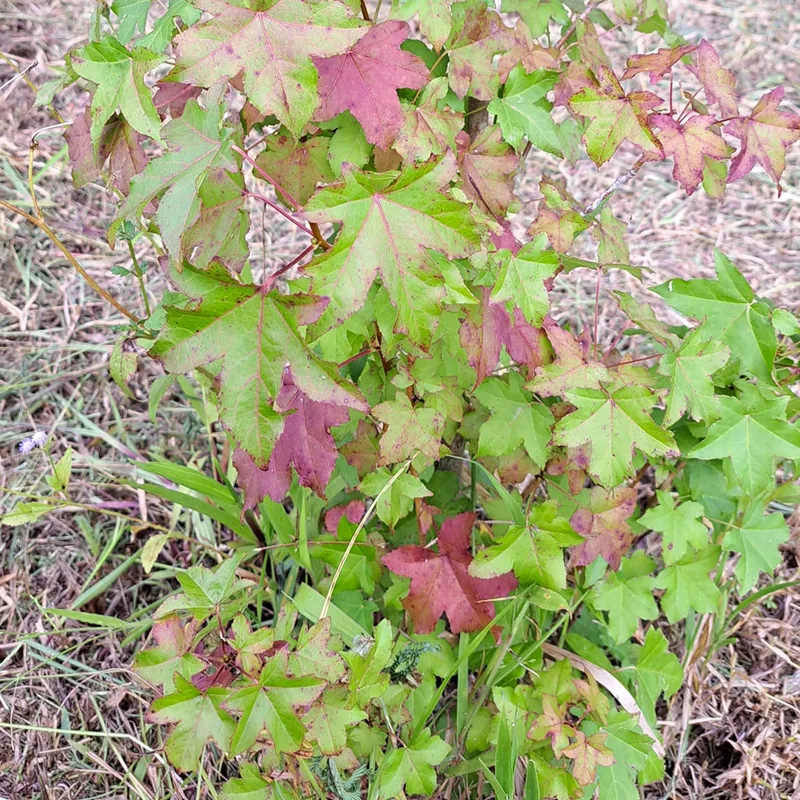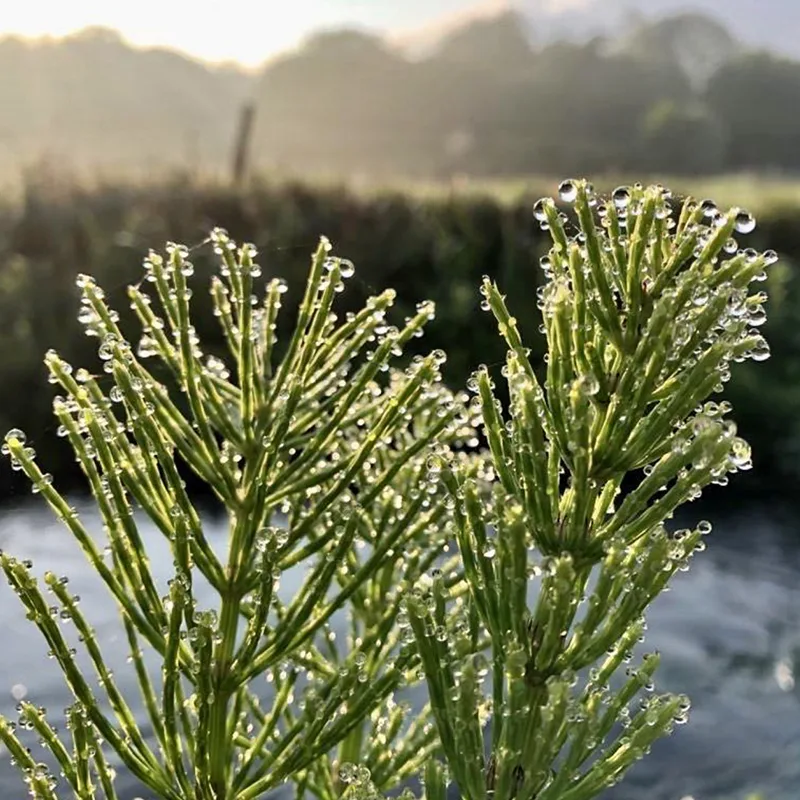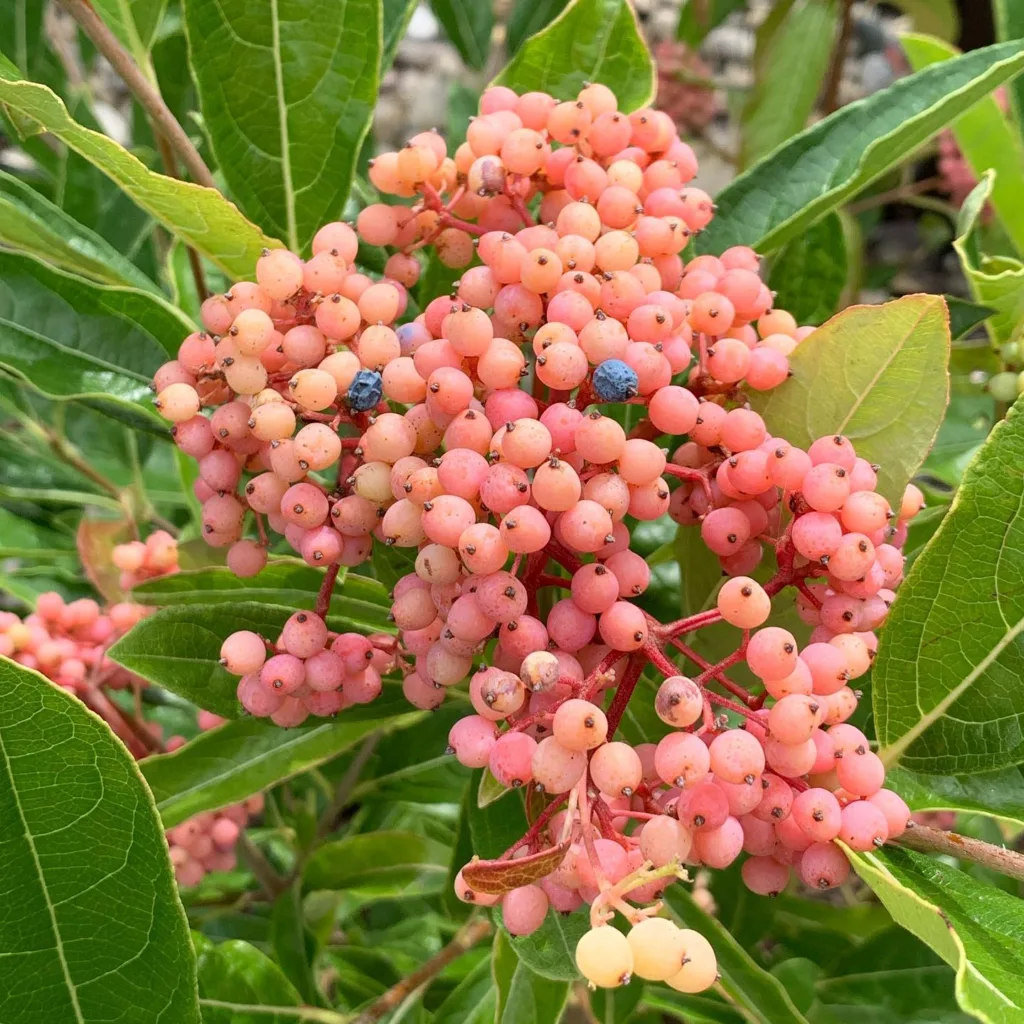The Humble Hydrocotyle: A Closer Look
I’ve always been fascinated by the diversity of plant life, especially those that thrive in and around water. One genus that has particularly caught my eye is Hydrocotyle, a group of creeping, often aquatic plants with a simple beauty and surprising versatility. They might not be the showiest blooms in the garden, but there’s something captivating about their delicate leaves and understated charm.
What is Hydrocotyle?
Hydrocotyle, sometimes called water pennywort, Indian pennywort, or dollar weed, is a genus of prostrate, perennial plants that typically favor wet habitats. You’ll often find them creeping along the edges of ponds, streams, and wetlands, or even happily growing as ground cover in damp, shady spots. They’re members of the Araliaceae family, which also includes familiar plants like ginseng and ivy.
What makes Hydrocotyle stand out are its leaves. They’re typically round or kidney-shaped, giving rise to the common name “pennywort.” The leaves are often peltate, meaning the stem attaches to the center of the leaf’s underside, rather than the edge, creating a shield-like appearance. This unique structure is one of the key features that helps me identify Hydrocotyle in the wild.
A Diverse Genus
While the name “pennywort” might evoke a single image, Hydrocotyle is a surprisingly diverse genus. There are estimated to be over 75 species distributed across the globe, each with its own unique characteristics and adaptations. Some, like Hydrocotyle vulgaris (marsh pennywort), are native to Europe and prefer temperate climates, while others, like Hydrocotyle umbellata (water pennywort), are more widespread and can tolerate warmer conditions.
Here’s a list of Hydrocotyle species:
- Hydrocotyle aconitifolia A.Rich.
- Hydrocotyle acuminata Urb.
- Hydrocotyle acutifolia Ruiz & Pav.
- Hydrocotyle acutiloba (F.Muell.) N.A.Wakef.
- Hydrocotyle adrianae M.Mend.
- Hydrocotyle alata A.Rich.
- Hydrocotyle alchemilloides A.Rich.
- Hydrocotyle algida N.A.Wakef.
- Hydrocotyle alpestris Gardner
- Hydrocotyle americana L.
- Hydrocotyle andina Cuatrec.
- Hydrocotyle apolobambensis M.Mend. & A.Fuentes
- Hydrocotyle aristeguietae Mathias & Constance
- Hydrocotyle asterocarpa A.J.Perkins
- Hydrocotyle barbarossa Cham. & Schltdl.
- Hydrocotyle benguetensis Elmer
- Hydrocotyle blepharocarpa F.Muell.
- Hydrocotyle boliviana (Kuntze) Mathias
- Hydrocotyle bonariensis Comm. ex Lam.
- Hydrocotyle bonplandii A.Rich.
- Hydrocotyle bowlesioides Mathias & Constance
- Hydrocotyle bradei Rossbach
- Hydrocotyle brittonii Mathias
- Hydrocotyle burmanica Kurz
- Hydrocotyle calcicola Y.H.Li
- Hydrocotyle callicarpa Bunge
- Hydrocotyle callicephala Cham.
- Hydrocotyle capillaris F.Muell.
- Hydrocotyle capitata Thouars
- Hydrocotyle chamaemorus Cham. & Schltdl.
- Hydrocotyle changanensis X.C.Du & Y.Ren
- Hydrocotyle chevalieri (Cherm.) Tardieu
- Hydrocotyle chiangdaoensis Murata
- Hydrocotyle comocarpa F.Muell.
- Hydrocotyle conferta Wight
- Hydrocotyle coriacea M.Mend.
- Hydrocotyle corynophora F.Muell.
- Hydrocotyle crassiuscula Tate
- Hydrocotyle cryptocarpa Speg.
- Hydrocotyle cuatrecasasii Mathias & Constance
- Hydrocotyle dahlgrenii Rose & Macbride
- Hydrocotyle decorata A.J.Perkins
- Hydrocotyle demissa A.R.Bean
- Hydrocotyle diantha DC.
- Hydrocotyle dichondroides Makino
- Hydrocotyle dielsiana H.Wolff
- Hydrocotyle digitata A.R.Bean & Henwood
- Hydrocotyle dimorphocarpa A.J.Perkins
- Hydrocotyle dipleura A.R.Bean
- Hydrocotyle domingensis Mathias & Constance
- Hydrocotyle eccentrica Britton
- Hydrocotyle eichleri A.J.Perkins
- Hydrocotyle elegans A.Rich.
- Hydrocotyle elongata A.Cunn. ex Hook.f.
- Hydrocotyle escondida M.Mend.
- Hydrocotyle exigua (Urb.) Malme
- Hydrocotyle feaniana F.Br.
- Hydrocotyle felipae M.Mend.
- Hydrocotyle filipes Mathias
- Hydrocotyle fontana A.R.Bean
- Hydrocotyle foveolata H.Eichler
- Hydrocotyle galapagensis B.L.Rob.
- Hydrocotyle geraniifolia F.Muell.
- Hydrocotyle globiflora Ruiz & Pav.
- Hydrocotyle glochidiata Benth.
- Hydrocotyle gracilis Ruiz & Pav.
- Hydrocotyle grammatocarpa F.Muell.
- Hydrocotyle grossulariifolia Rusby
- Hydrocotyle grossularioides A.Rich.
- Hydrocotyle gunnerifolia Wedd.
- Hydrocotyle hederacea Mathias
- Hydrocotyle heteromeria A.Rich.
- Hydrocotyle heucherifolia Mathias
- Hydrocotyle hexagona Mathias
- Hydrocotyle himalaica P.K.Mukh.
- Hydrocotyle hirsuta Sw.
- Hydrocotyle hirta R.Br. ex A.Rich.
- Hydrocotyle hispidula Bunge
- Hydrocotyle hitchcockii Rose ex Mathias
- Hydrocotyle hookeri (C.B.Clarke) Craib
- Hydrocotyle humboldtii A.Rich.
- Hydrocotyle humifusa Pohl ex DC.
- Hydrocotyle hydrophila Petrie
- Hydrocotyle incrassata Ruiz & Pav.
- Hydrocotyle indecora DC.
- Hydrocotyle inops A.R.Bean
- Hydrocotyle itatiaiensis Brade
- Hydrocotyle javanica Thunb.
- Hydrocotyle juanae M.Mend.
- Hydrocotyle kollimalayensis Karupp. & M.A.Ali
- Hydrocotyle langsdorffii DC.
- Hydrocotyle lanipes Urb. & Ekman
- Hydrocotyle laxiflora DC.
- Hydrocotyle lehmannii Mathias
- Hydrocotyle lemnoides Benth.
- Hydrocotyle leucocephala Cham. & Schltdl.
- Hydrocotyle longipedunculata M.Mend.
- Hydrocotyle longipes Mathias & Killip
- Hydrocotyle lopeziae M.Mend.
- Hydrocotyle maculosa A.R.Bean
- Hydrocotyle mannii Hook.f.
- Hydrocotyle medicaginoides Turcz.
- Hydrocotyle mexicana Schltdl. & Cham.
- Hydrocotyle microphylla A.Cunn.
- Hydrocotyle miranda A.R.Bean & Henwood
- Hydrocotyle modesta Cham. & Schltdl.
- Hydrocotyle moschata G.Forst.
- Hydrocotyle multifida A.Rich.
- Hydrocotyle muriculata Turcz.
- Hydrocotyle muscosa R.Br. ex A.Rich.
- Hydrocotyle new-guinensis M.Hiroe
- Hydrocotyle nixoides Mathias & Constance
- Hydrocotyle novae-zeelandiae DC.
- Hydrocotyle × nubigena Lucas Rodr.
- Hydrocotyle oligantha Urb.
- Hydrocotyle oraria A.R.Bean
- Hydrocotyle palacea (Urb.) Nery & Fiaschi
- Hydrocotyle palmata Mathias
- Hydrocotyle paludosa A.R.Bean
- Hydrocotyle papilionella A.J.Perkins
- Hydrocotyle pedicellosa F.Muell. ex Benth.
- Hydrocotyle peltiformis R.Li & H.Li
- Hydrocotyle pennellii Rose ex Mathias
- Hydrocotyle perforata A.J.Perkins
- Hydrocotyle perplexa A.J.Perkins
- Hydrocotyle peruviana H.Wolff
- Hydrocotyle petelotii Tardieu
- Hydrocotyle phoenix A.J.Perkins
- Hydrocotyle pilifera Turcz.
- Hydrocotyle plebeya R.Br. ex A.Rich.
- Hydrocotyle poeppigii DC.
- Hydrocotyle prolifera Kellogg
- Hydrocotyle pseudoboliviana M.Mend.
- Hydrocotyle pseudoconferta Masam.
- Hydrocotyle pseudosanicula H.Boissieu
- Hydrocotyle pterocarpa F.Muell.
- Hydrocotyle pusilla A.Rich.
- Hydrocotyle pygmaea C.Wright
- Hydrocotyle quinqueloba Ruiz & Pav.
- Hydrocotyle quinqueradiata (Urb.) Nery & Fiaschi
- Hydrocotyle ramiflora Maxim.
- Hydrocotyle ranunculoides L.f.
- Hydrocotyle ribifolia Rose & Standl.
- Hydrocotyle rivularis H.Eichler ex Henwood
- Hydrocotyle robusta Kirk
- Hydrocotyle rugulosa Turcz.
- Hydrocotyle sagasteguii Constance & M.O.Dillon
- Hydrocotyle salwinica R.H.Shan & S.L.Liou
- Hydrocotyle schlechteri H.Wolff
- Hydrocotyle scutellifera Benth.
- Hydrocotyle serendipita A.J.Perkins
- Hydrocotyle setulosa Hayata
- Hydrocotyle siamica Craib
- Hydrocotyle sibthorpioides Lam.
- Hydrocotyle simulans A.J.Perkins
- Hydrocotyle solomonii M.Mend.
- Hydrocotyle sphenoloba Wedd.
- Hydrocotyle spinulifera A.J.Perkins
- Hydrocotyle steyermarkii Mathias & Constance
- Hydrocotyle striata Benth.
- Hydrocotyle sulcata C.J.Webb & P.N.Johnson
- Hydrocotyle tambalomaensis H.Wolff
- Hydrocotyle tenerrima Rose ex Mathias
- Hydrocotyle tetragonocarpa Bunge
- Hydrocotyle tonkinensis Tardieu
- Hydrocotyle torresiana Rose & Standl.
- Hydrocotyle trachycarpa F.Muell.
- Hydrocotyle tripartita R.Br. ex A.Rich. – Plant FAQs: Hydrocotyle Tripartita
- Hydrocotyle tuberculata A.J.Perkins
- Hydrocotyle tumida A.R.Bean & Henwood
- Hydrocotyle ulei H.Wolff
- Hydrocotyle umbellata L. – Plant FAQs: Hydrocotyle Umbellata
- Hydrocotyle urbaniana H.Wolff
- Hydrocotyle venezuelensis Rose ex Mathias
- Hydrocotyle verticillata Thunb. – Plant FAQs: Hydrocotyle Verticillata – Whorled Pennywort
- Hydrocotyle vestita Mathias & Killip
- Hydrocotyle vulgaris L. – Plant FAQs: Hydrocotyle Vulgaris
- Hydrocotyle wilfordii Maxim.
- Hydrocotyle wilsonii Diels ex R.H.Shan & S.L.Liou
- Hydrocotyle yabei Makino
- Hydrocotyle yanghuangensis (Hieron.) Mathias
- Hydrocotyle zongoana M.Mend.
More Than Just a Pretty Face
Beyond their aesthetic appeal, Hydrocotyle species have also played important roles in traditional medicine and even in modern culinary practices. Hydrocotyle asiatica, also known as Centella asiatica or gotu kola, has been used for centuries in Ayurvedic and traditional Chinese medicine to treat a variety of ailments, from skin conditions to anxiety. It’s also gaining popularity as a culinary herb, adding a unique flavor to salads and stir-fries.
However, it’s important to note that not all Hydrocotyle species are edible. Some, like Hydrocotyle ranunculoides, can be toxic if ingested. It’s crucial to properly identify any wild plants before consuming them.
Hydrocotyle in the Ecosystem
Hydrocotyle species play a vital role in their ecosystems. Their dense growth habit provides shelter for aquatic insects and small animals, while their leaves offer shade and help to reduce water temperature. They also help to prevent erosion and filter pollutants from the water.
However, some Hydrocotyle species, particularly Hydrocotyle ranunculoides, can become invasive in certain environments. Their rapid growth can outcompete native plants, clogging waterways and disrupting the delicate balance of the ecosystem. It’s important to be mindful of this potential issue and choose species that are appropriate for your local environment.
Cultivating Hydrocotyle
For those interested in cultivating Hydrocotyle, most species are relatively easy to grow. They prefer moist, well-drained soil and partial shade, although some can tolerate full sun. They can be propagated from seed or cuttings, and once established, they require minimal care.
Whether you’re a seasoned gardener or just starting out, Hydrocotyle offers a rewarding experience. Their unique beauty and adaptability make them a welcome addition to any garden, pond, or terrarium.
A Continuing Fascination
My exploration of the Hydrocotyle genus has been a journey of discovery and appreciation. From their diverse forms and ecological roles to their potential uses in medicine and cuisine, these humble plants have proven to be far more complex and intriguing than I initially imagined. I look forward to continuing my study of these fascinating plants and sharing my knowledge with others.
If i die, water my plants!



